Intimate and solemn, a 17th-century Nativity , a copy of the painting by Federico Barocci (Urbino, 1533 - 1612) kept at the Prado Museum in Madrid, which has been legible again for two years thanks to restoration, carried out in 2023, through the Art Bonus mechanism. The intervention, worth 4,267.56 euros, was promoted by the Municipality of Montegiorgio, in the province of Fermo in the Marche region of Italy, with the support of Luna Srl, a company in the footwear sector led by entrepreneur Robertino Tulli, already active in financing the restoration of the Crucifixion with Virgin, Magdalene and St. John. Today the painting, originally located in the church of San Francesco, is on display at Palazzo Passari and can be admired by the public during opening hours.
This painting demonstrates how even copies can often be very interesting works: according to studies by Marisa Calisti and Andrea Emiliani, the canvas may have been commissioned by the friars of the convent of San Francesco from Alessandro Vitali (Pesaro, 1580 - Urbino, 1630), a pupil of Federico Barocci, but it is not ruled out that Barocci himself participated in its creation, particularly for the figure of the Virgin. Two other known copies of the original work, attributable to Vitali, are preserved at the Pinacoteca Ambrosiana in Milan and elsewhere documented in 1605, compatible with the provenance of the Montegiorgio canvas, given the period when Vitali was working for a canvas in Fermo Cathedral.
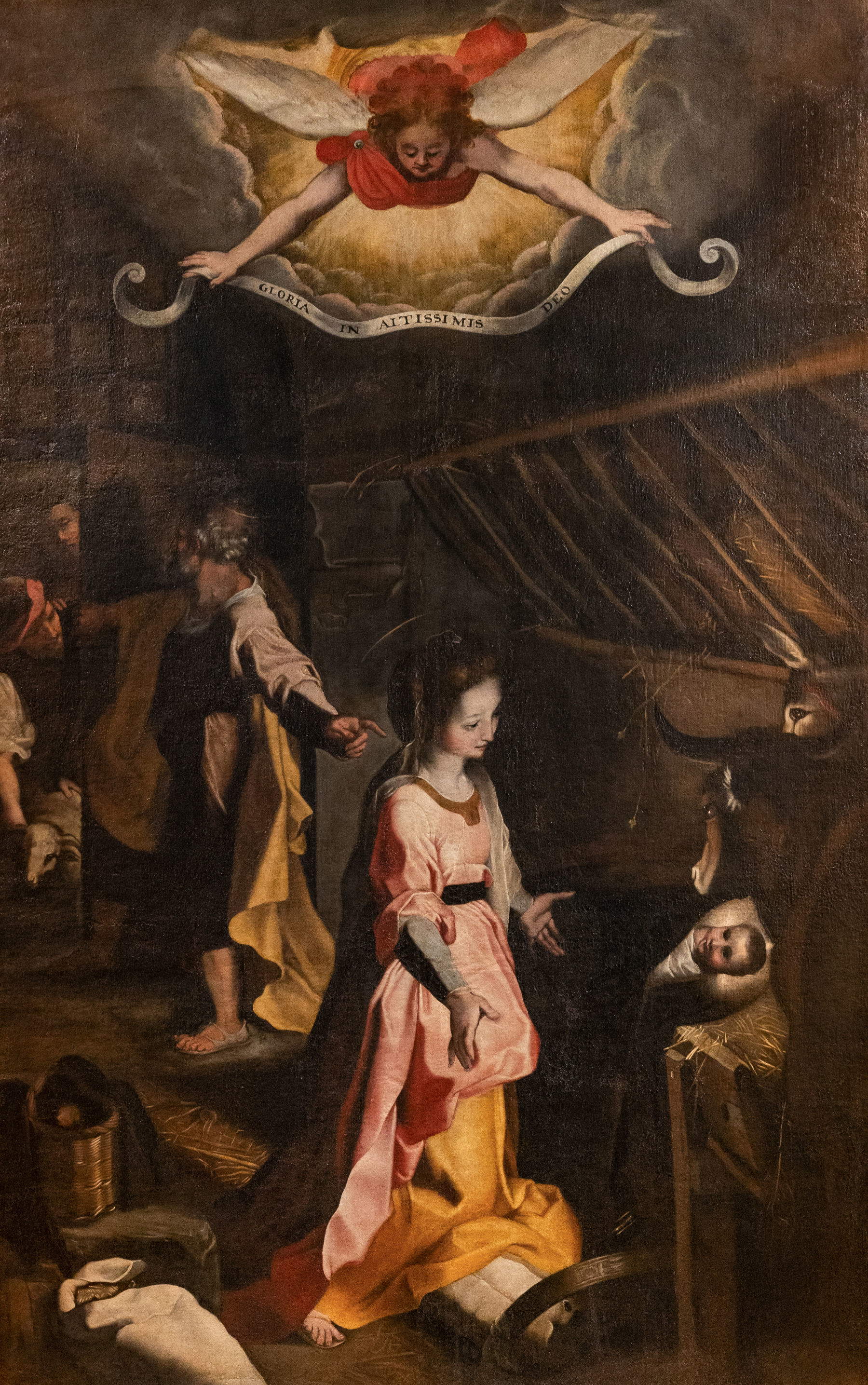
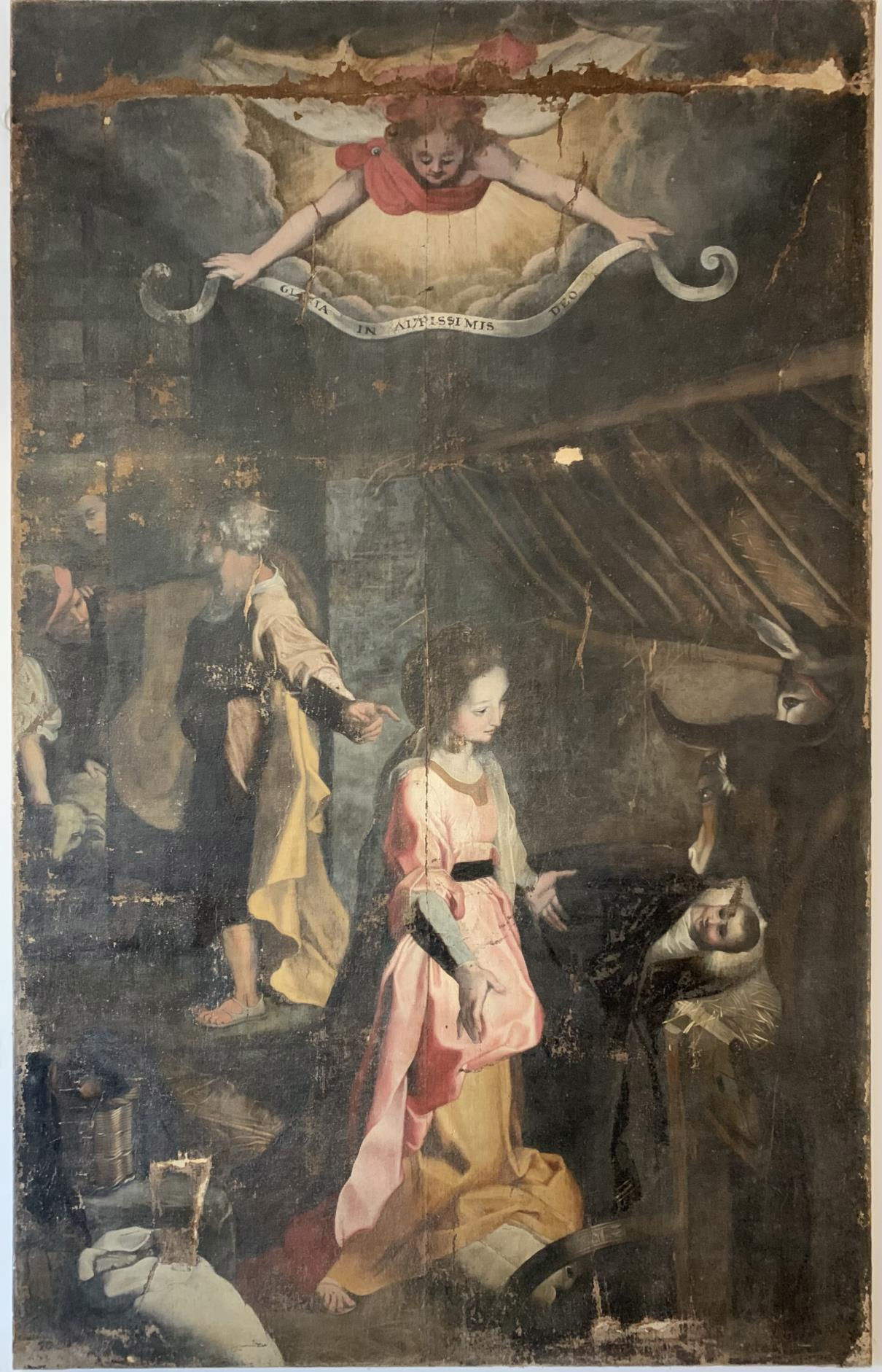
The work depicts in the center the Virgin kneeling before the Child wrapped in swaddling clothes, from which radiates a light that illuminates the ox, the donkey, the figure of the mother and that of Joseph. The latter is portrayed in the act of opening the door, from which two shepherds with a ram appear, while pointing to the Child with his outstretched arm. The upper part of the painting, with a cherubic angel holding a festoon with the inscription “GLORIA IN ALTISSIMIS DEO,” was probably added in the 18th century, as indicated by Emiliani’s studies. In any case, the canvas had already undergone restoration in 2001 by the firm Ermete Crisanti of Lucca.
The restoration followed a sequence of interventions aimed at ensuring the stability and legibility of the work. The consolidation of the preparation and color was carried out through the application of acrylic resin type Plexisol, diluted so as to reinforce the support without altering the pictorial surfaces. Cleaning was carried out selectively to remove dust, oxidized varnish, deteriorated previous interventions and repainting, using absorbent cotton swabs soaked in solvent mixtures calibrated according to the nature of the dirt and the degree of intervention needed, preserving the painting’s original patina.
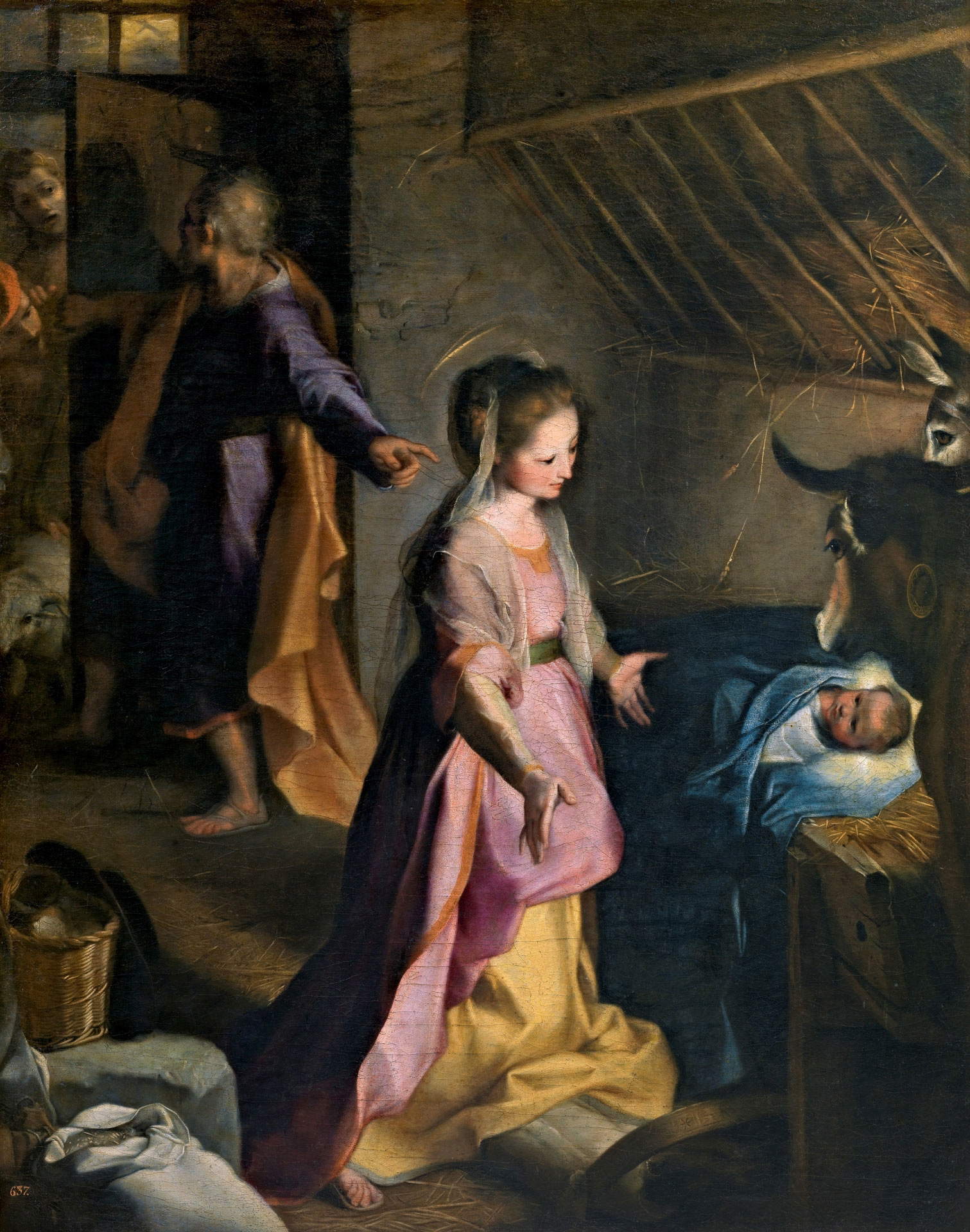
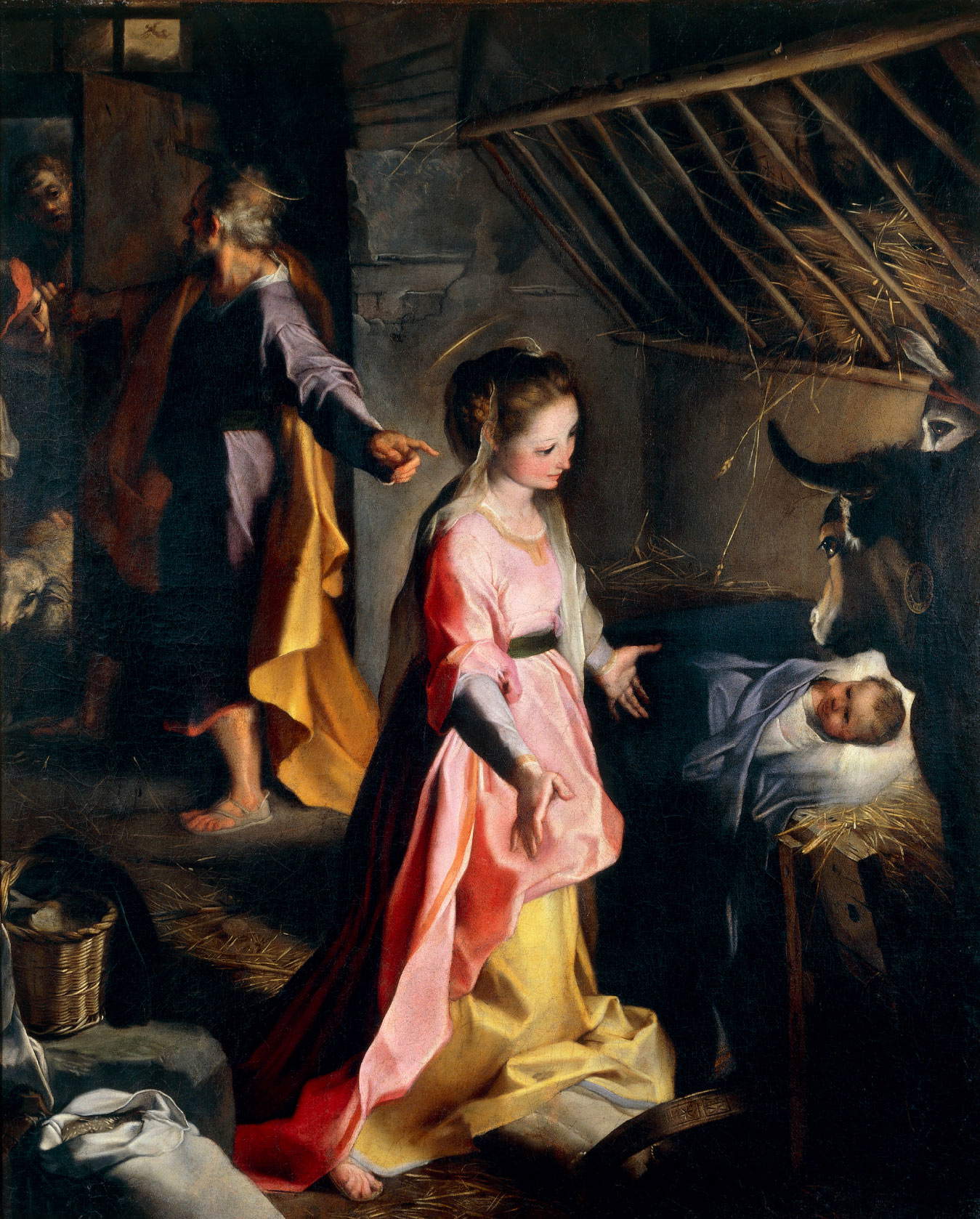
Instead, the gaps on the canvas were integrated with mortar made from Bologna chalk and rabbit glue, shaved level and made uniform with the surrounding surface. The pictorial integration was carried out through watercolor glazes on the abraded areas, mimetic interventions with a tempera or watercolor base and subsequent retouching with varnish colors on the smaller gaps, while for the larger areas selective retouching with varnish colors and neutral watercolor was adopted, according to the indications of the Works Management. The objective was thus to ensure a unity of color reading consistent with the original rendering of the work.
Finally, painting of the pictorial surface was done by brush during the pictorial intervention and then by misting, ensuring adequate final protection for the restored surfaces. The set of interventions thus made it possible to recover the legibility of the painting, preserving its history and material characteristics without altering its artistic value.
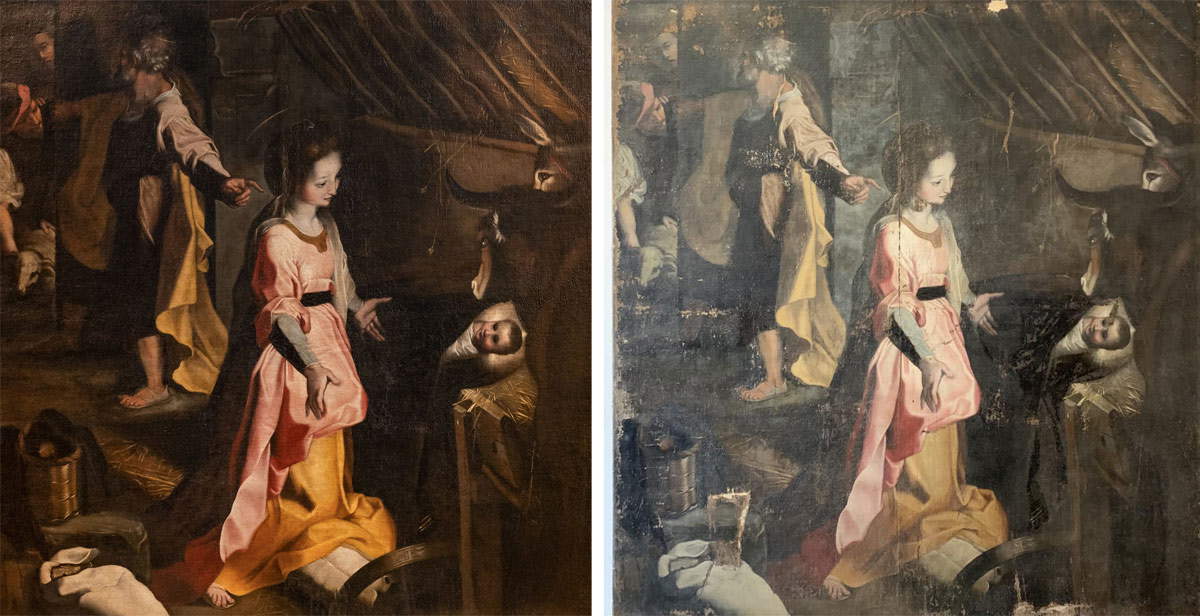 |
| Marche, a 17th-century copy of Federico Barocci reborn with Art Bonus |
Warning: the translation into English of the original Italian article was created using automatic tools. We undertake to review all articles, but we do not guarantee the total absence of inaccuracies in the translation due to the program. You can find the original by clicking on the ITA button. If you find any mistake,please contact us.